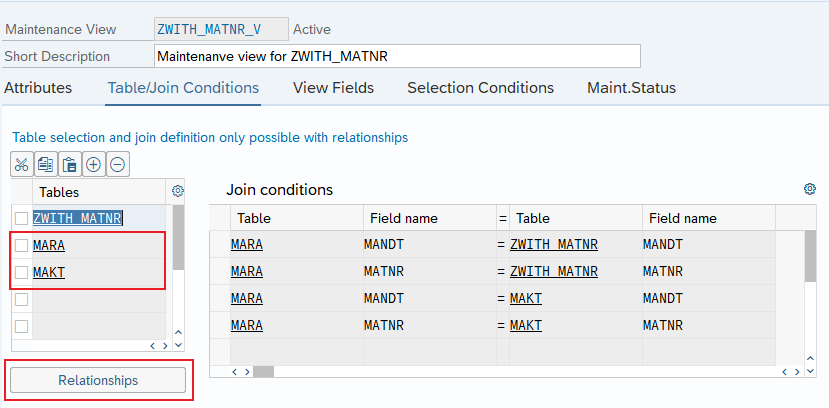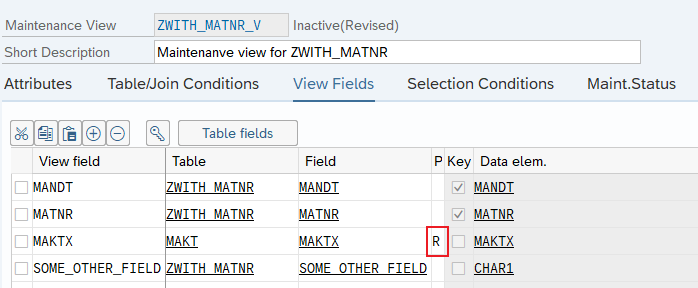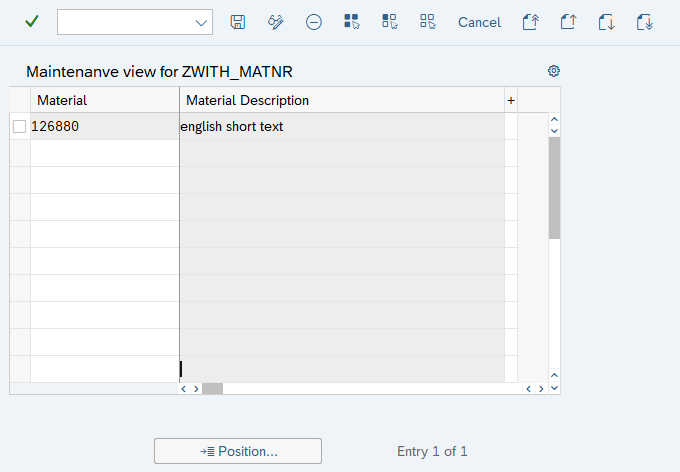Displaying Descriptive Texts in SM30 Maintenance Views
Learn how to display descriptive texts from related tables in SAP SM30 maintenance views. This guide covers foreign keys, language filtering, and read-only fields for user-friendly data management.
In SAP development, it’s quite common to receive a request to display descriptive texts—like material short texts—in an SM30 table maintenance view. However, out of the box, only columns of the table itself can be edited or displayed. This post walks through how to enrich a maintenance view with fields from related tables, specifically how to bring in the material short text (MAKT-MAKTX) via a maintenance view using the DDIC.
🔗 Insertion of a Foreign Key to MARA
To enable linking your custom table with the material master (MAKT), you must first create a foreign key on the material number field that references MARA.
This foreign key is the key foundation that allows you to later use the field in a maintenance view for extended display.
🏗️ Create a Maintenance View in SE11
Once the foreign key is in place, it’s time to build a maintenance view in transaction SE11. This view will combine your custom table and the material-related tables.
- Start a new view of type Maintenance View.
- Add your base table.
- Use the Relations button to link your table to
MARA.
Then, with MARA highlighted, use Relations again to include MAKT.
🎯 Apply Selection Conditions for Language Filtering
To ensure only the short text in the logon language is shown, apply a selection condition like this:
This ensures that the maintenance view fetches MAKT entries only for the user’s session language (e.g. SY-LANGU).
🛡️ Make Text Field Read-Only
To avoid accidental changes to the descriptive text field (MAKT-MAKTX), mark it as read-only in the maintenance view field settings.
This is important to preserve the integrity of standard master data.
🖼️ Generate the Maintenance Dialog
After you’ve set everything up, all that’s left is to generate the maintenance dialog from SE11 or SE54. Once done, the SM30 screen will now show the material short text alongside your other data — without allowing edits to it.
This makes the maintenance view far more user-friendly and informative, especially for key user inputs.
🧠 Final Thoughts
This approach brings significant usability improvements to maintenance views in SM30. By leveraging foreign keys and DDIC maintenance views, you can enrich your data displays without writing a single line of ABAP code. Just remember:
- Always use foreign keys for clean DDIC relationships
- Filter text fields by language to avoid multilingual clutter
- Use read-only flags to prevent unwanted changes




